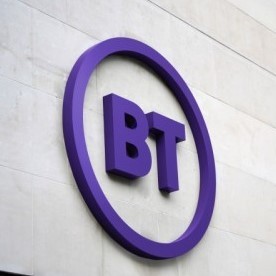
BT has announced some details of an open RAN trial in Hull, a city in the north of England.
According to the press release, BT will install a RAN intelligent controller (RIC) from Nokia across a "number of sites." The aim is to explore ways of "optimizing network performance" at BT-owned EE. BT told Light Reading that the initial phase is focused on the near-real-time RIC and deployments in outdoor urban areas.
In parallel with the trial announcement, BT said it will open a dedicated "open RAN innovation center" at its Adastral Park facility later this year. Opportunities will be apparently available for "large and small vendors to develop and prove their equipment and provide a platform for open architecture progress across all network elements."
BT framed the Hull rollout and the new test facility as "underlining its ongoing commitment to the development and deployment of open RAN technology." With its vendor partners, BT says it's developing open RAN "to ensure it becomes a viable, mature, scale option for network optimization as soon as possible."
Reading between the lines
Neil McRae, chief architect at BT, spoke enthusiastically enough about the two developments in prepared remarks, but was by no means getting carried away or jumping on open RAN bandwagons. He pointedly noted that the open RAN trial was "one of many investments" BT was making to boost EE's network performance.
McRae also called out in glowing terms the contribution of "major global vendors" – BT leans heavily on both Nokia and Ericsson – in providing "high performance" and "high efficiency" 4G and 5G RAN gear at scale. By using established vendors, McRae tellingly added, BT has "confidence" that EE customers "will get the best network experience possible."
Open RAN on the other hand has still got much to prove on performance, particularly in urban areas. Moreover, despite BT's spanking new open RAN test facility being available for vendors big and small, McRae doesn't appear to have much of an appetite for supplier diversity. "By working with fewer [suppliers], you ultimately get quicker outcomes, better outcomes and more economic outcomes most of the time," he recently told reporters.
Want to know more about 5G? Check out our dedicated 5G content channel here on Light Reading.
BT's chief architect has also talked candidly in the past about open RAN scalability challenges, as well as disparaging what he sees as the extravagant cost-reduction claims made by the nascent tech's enthusiasts. In one webinar, as reported by TelcoTitans, McRae let slip a wry grin when the moderator referenced the assertion by Japan's Rakuten Mobile that opex could be reduced by as much as 40% compared with traditional RAN rollouts.
That's not to say McRae sees no value in open RAN, even if he doesn't buy into the cost-reduction story. RIC functionality, to be tested in Hull, is something he has spoken positively about in terms of fine-tuning radio beams and saving on power consumption.
Open RAN in the hands of the big guys?
John Strand, CEO of Danish advisory group Strand Consult, suggests that BT's keenness on persisting with "major global vendors" does not necessarily mean missing out on future open RAN advancements.
In his report, "Debunking 25 myths of OpenRAN," Strand – according to sources – found that a total of 5,044 technical contributions were made to the O-RAN Alliance in 2020. Of that number Parallel Wireless made 4; Dell 2; and Mavenir 75. Ericsson and Nokia made 1,000 in total. The same pattern continued in the first half of 2021. Dell made 1 contribution; Parallel Wireless 5; and Mavenir 47. Nokia and Ericsson? They chipped in with a combined total of 1,100 over the six-month period.
"The OpenRAN pure plays contributed the least while the established players contributed the most," said the report. "Those who boast the loudest about OpenRAN are likely contributing the least."
Nor does Strand agree with Dell'Oro's assessment that open RAN will account for 15% of the total 2G to 5G RAN market by 2026.
"Open RAN is too little, too late," he told Light Reading. "Operators have already made their decisions. They are ripping and replacing old 2G and 3G networks with new equipment. 5G has been deployed in more than 200 networks worldwide, and thousands of sites are being deployed every month with 5G."
Strand thinks open RAN will account for just 3% of all mobile sites by 2030. "I believe in open RAN for private networks, such as factories, as well as some indoor coverage," he said. "As for mass market mobile coverage, forget it. I don't believe it. Open RAN doesn't have the scale."
— Ken Wieland, contributing editor, special to Light Reading
Read more about:
EuropeAbout the Author(s)
You May Also Like











